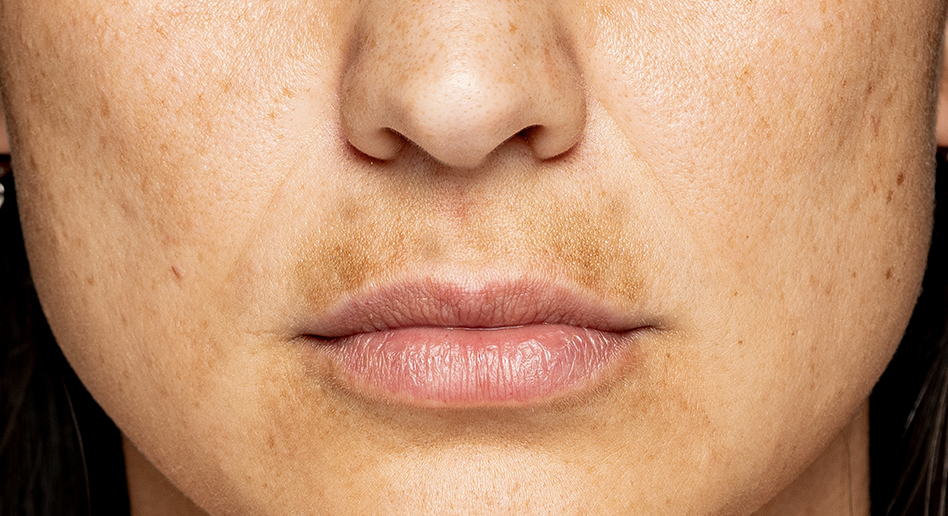8TH JUL 2025
5 Things You Need to Know About Melasma

Skinsights > 5 Things You Need to Know About Melasma
5 Things You Need to Know About Melasma
- Melasma: the skin condition that’s as mysterious as it is stubborn. If you’ve been battling those uninvited dark patches on your face that just won’t budge, there’s a good chance melasma is the culprit. But don’t worry—while it’s tricky, it’s not unbeatable.
- Whether you’ve just noticed these spots or they’ve been sticking around for years, we’ve got five key facts to help you decode, understand, and manage this sneaky skin condition like a pro. Let’s get to it!!
What Is Melasma?
- First off, what exactly is melasma? Melasma is a form of hyperpigmentation, often appearing as grayish-brown patches on the skin, typically on the cheeks, forehead, nose, or upper lip. While melasma itself isn’t harmful, its unpredictability and resistance to treatment often add frustration to those affected.
- Though its exact cause isn’t fully understood, melasma is commonly linked to hormonal changes, sun exposure, and certain environmental factors. This complex condition requires consistent, proactive care—but worry not! With the right information and treatment, you can manage it effectively.
1. Melasma Is Often Caused by Hormonal Changes
- If melasma flares up during pregnancy, while using birth control pills, or undergoing hormone therapy, you’re not alone. These hormonal changes can jumpstart your skin’s melanin production, especially when paired with light exposure. It’s no wonder melasma is nicknamed the “mask of pregnancy.”
What can you do?
- Wearing tinted sunscreen daily (more on that later) and consulting a dermatologist for a personalized skincare routine are good first steps. Hormonal shifts may be unavoidable, but lifestyle adjustments and protective measures can help limit their effects on your skin.
2. Melasma Is a Complex and Chronic Condition
- The truth about melasma is that it’s not just about what’s happening on the surface of your skin. This condition stems from deep within the skin’s layers, involving pigment cells, blood vessels, and even inflammation. Melasma often reacts to environmental triggers like sunlight and heat, making it a longer-term (chronic) issue.
Why does melasma come back?
- Even if your melasma clears up, it’s important to know it might reappear when triggered by factors like UV light, visible light, or hormonal shifts. That’s why long-term management and maintenance are key to keeping it under control.
3. Melasma Is Triggered by More Than Just Sunlight
- We know the sun is a major villain when it comes to skin pigmentation, but melasma isn’t just a UV-induced problem. Visible light (such as the blue light emitted by digital screens) and heat (even from cooking or steam rooms) can aggravate melasma. Things as simple as friction from harsh scrubs or over-exfoliation can also worsen the condition.
What can you do?
- Protect your skin by avoiding excessive heat. Skip hot yoga sessions, long hot showers, and other activities that expose your skin to high temperatures. Instead, focus on keeping cool with a fan or a refreshing mist, and choose skincare products that soothe and support your skin’s unique needs.
4. Treating Melasma Requires a Multi-Ingredient Approach
- While it’s tempting to search for that one miracle ingredient, melasma is best tackled with a combination of effective actives. Over-the-counter products may help with mild discoloration, but prescription-strength formulations deliver the real results needed for stubborn melasma.
What works for melasma?
- Professionally curated treatments often include these active ingredients:
- Hydroquinone: A gold-standard lightning agent that suppresses melanin production.
- Tranexamic Acid: An anti-inflammatory powerhouse that reduces pigmentation.
- Kojic Acid: A natural skin brightener derived from fungi.
- Tretinoin: Speeds up skin cell turnover for quicker fading of dark spots.
- Azelaic Acid & Niacinamide: These strengthen the skin barrier while subtly evening skin tone.
- Alpha Arbutin: Known for its gentle but effective brightening properties.
- When combined in custom formulas, these ingredients offer optimal results. Always consult a dermatologist to tailor a treatment approach just for you. Self-prescribing active ingredients without professional guidance may lead to irritation or worsening pigmentation.
5. Tinted Sunscreen Is Non-Negotiable
- If you’re managing melasma, sunscreen is your best friend. But not just any sunscreen will do. Research has shown that tinted sunscreens, which contain iron oxide, help block visible light in addition to UV rays, offering deeper-level protection specific to melasma sufferers.
Tips for choosing sunscreen:
- Pick a broad-spectrum sunscreen providing SPF 30 or higher.
- Look for iron oxide-based tints that blend naturally with your skin tone.
- Apply generously 15 minutes before sun exposure and reapply every two hours.
- Daily sunscreen use is a must, even if you’re primarily indoors.
Melasma Is Tough, but You’re Tougher
- Managing melasma takes patience and persistence, but with the right knowledge and support, it’s not unbeatable. By identifying your triggers, sticking to a skin-friendly routine, and incorporating prescription-grade solutions alongside tinted sunscreens, you’ll be equipped to handle this condition with confidence.
- If over-the-counter products haven’t worked for your melasma, you’re not alone. Prescription skincare isn’t just about treating the surface; it gets to the heart of the problem. That’s why partnering with a dermatologist or trusted skincare provider is key.
- Want tailored solutions without the guesswork? Start your first step to clearer skin today by exploring personalized, prescription-based treatments. Check out what’s available for melasma, and step into a consistent routine that puts you back in control.
- Because taking care of your skin isn’t just about looking great. It’s about feeling confident, empowered, and ready to shine.

